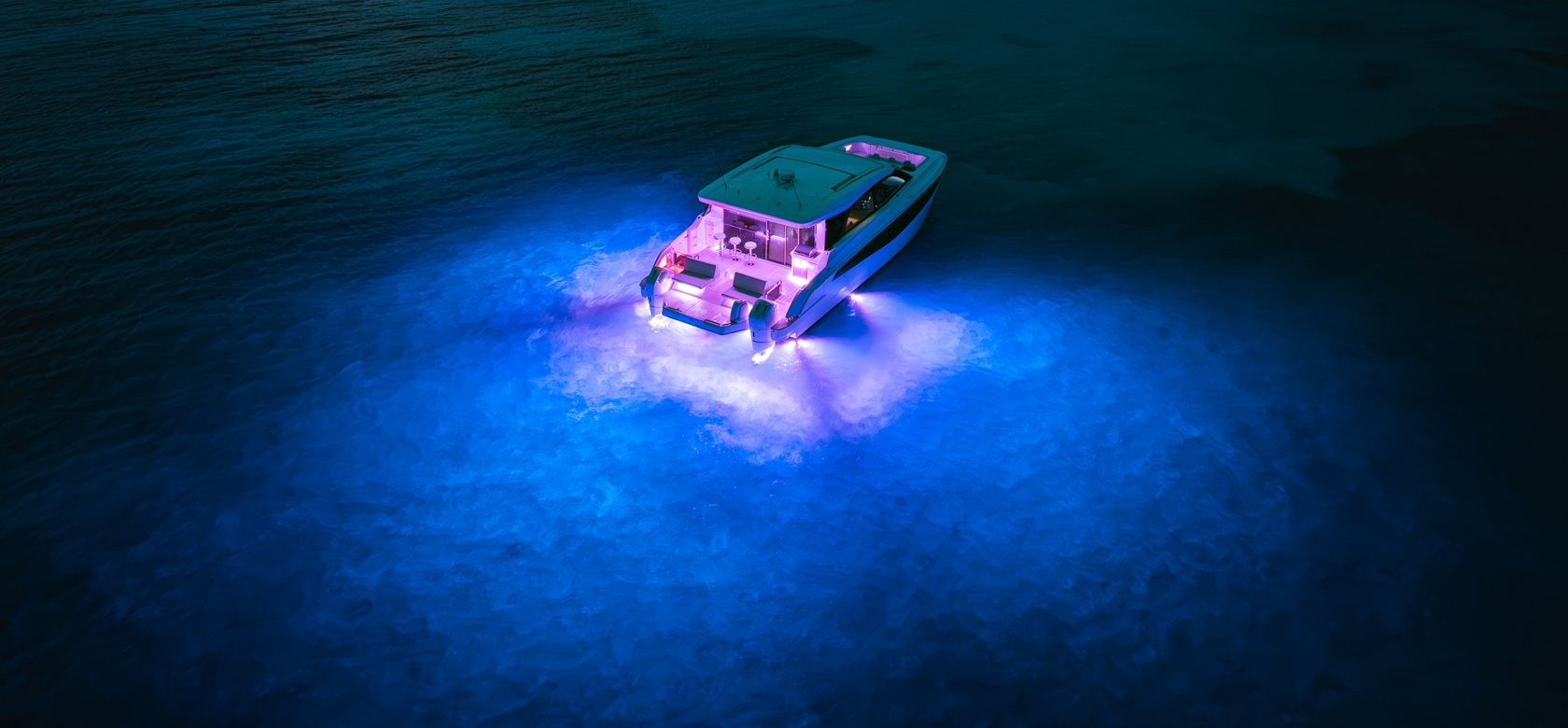
Have you ever noticed how a straw in a glass of water appears bent at the surface? It’s light refraction, defined by something called Snell’s law, and the same effect occurs with underwater lighting. The only way to mitigate this law of physics, is by using specifically designed underwater optics, like the ones found in the OceanLED product range.
First of all, it’s important to understand a little bit of science…
The Law...
Snell’s Law describes how light bends, or refracts, when it passes from one medium to another, such as air into water. This refraction occurs because light travels at different speeds in different media.
We won’t dive into the science too much, but Snell’s Law is calculable and can even be mathematically represented. Water has a higher refractive index than air, which means light slows down and bends towards the ‘normal’ when it enters water. The ‘normal’ being the direction the light face is pointing, and why underwater lights without optics suffer with such excessive amounts of light loss and inefficiency.
How Light Moves Through Water
When light enters water, it experiences a change in speed due to the higher density of water compared to air. This change in speed causes the light to bend. For example, if you shine a torch into a swimming pool at an angle, the light beam will bend downward. This bending effect is what makes objects underwater appear closer and larger than they are.
The Phenomenon
An interesting aspect of underwater lighting is the reduction of the beam angle when light enters water. A light with a 180-degree (wide) beam in the air will have its beam angle reduced to about 97.2 degrees in water. This occurs because of the higher refractive index of water compared to air and why underwater optics are a no brainer. If the width of your potential light spread is already limited by physics, why wouldn’t you focus those lost lumens and increase the efficiency and overall performance of your lights?
What does it all mean?
OPTICS MATTER IN UNDERWATER LIGHTING…
Improved Light Distribution: Optics help in distributing light evenly, reducing hotspots and shadows which is essential for creating visually appealing underwater lighting effects.
Enhanced Intensity & Focus: Optics concentrate light into more focused beams, supercharging your light output. It’s like adding a big turbo to your car.
Energy Efficiency: By directing light precisely where it’s needed, optics can enhance the efficiency of lighting systems, reducing energy consumption.
Versatility in Design: Angleable optic designs allow for versatile lighting solutions, allowing designers to create the best effects, no matter the shape of your boats hull.
Greater Simplicity: No one wants complicated installations. Advanced optics allow you to achieve more, with less. Greater performance with fewer lights, which in the long run means reduced maintenance and costs.
Extended Product Lifespan: Advanced optics allow underwater lights with fewer fixture lumens, to achieve the same lighting effect as lights with far greater fixture lumens, which also require more power. By driving less power through the LEDs, the life expectancy of each light is greatly extended.
Environmental and Sustainability Benefits: The use of underwater optics has allowed OceanLED to become the first and only light manufacturer to have it’s products certified by the Water Revolution Foundation as sustainable solutions.
The Conclusion…
Embracing the laws of physics and the role of light optics is essential for achieving the best lighting effects in underwater environments. By leveraging advanced optical technologies, OceanLED has enhanced achievable lighting effects for every vessel.